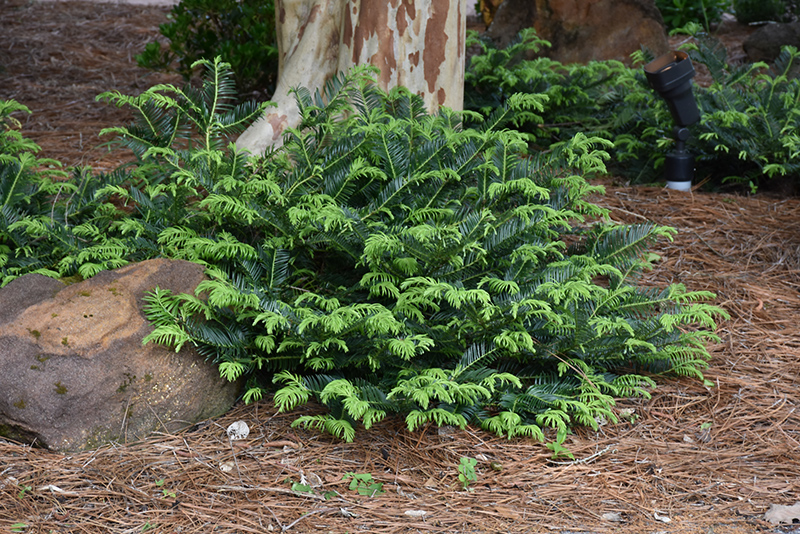Prostrate Japanese Plum Yew
Cephalotaxus harringtonia 'Prostrata'
Height: 3 feet
Spread: 4 feet
Sunlight:
![]()
![]()
![]()
Hardiness Zone: 6a
Other Names: Cow's Tail Pine
Description:
Shade loving gracefully spreading evergreen is perfect for woodlands and adapts to moist and dry soil; attractive dark green needles are lime green in spring; slow growing, but worth the wait
Ornamental Features
Prostrate Japanese Plum Yew is primarily valued in the garden for its cascading habit of growth. It has attractive dark green evergreen foliage which emerges lime green in spring. The glossy needles are highly ornamental and remain dark green throughout the winter.
Landscape Attributes
Prostrate Japanese Plum Yew is a dense multi-stemmed evergreen shrub with a shapely form and gracefully arching branches. It lends an extremely fine and delicate texture to the landscape composition which should be used to full effect.
This is a relatively low maintenance shrub, and is best pruned in late winter once the threat of extreme cold has passed. Deer don't particularly care for this plant and will usually leave it alone in favor of tastier treats. It has no significant negative characteristics.
Prostrate Japanese Plum Yew is recommended for the following landscape applications;
- Mass Planting
- Rock/Alpine Gardens
- General Garden Use
- Groundcover
Planting & Growing
Prostrate Japanese Plum Yew will grow to be about 3 feet tall at maturity, with a spread of 4 feet. It tends to fill out right to the ground and therefore doesn't necessarily require facer plants in front. It grows at a slow rate, and under ideal conditions can be expected to live for 50 years or more.
This shrub performs well in both full sun and full shade. It is very adaptable to both dry and moist growing conditions, but will not tolerate any standing water. It is not particular as to soil type or pH. It is highly tolerant of urban pollution and will even thrive in inner city environments. Consider applying a thick mulch around the root zone over the growing season to conserve soil moisture. This is a selected variety of a species not originally from North America.





